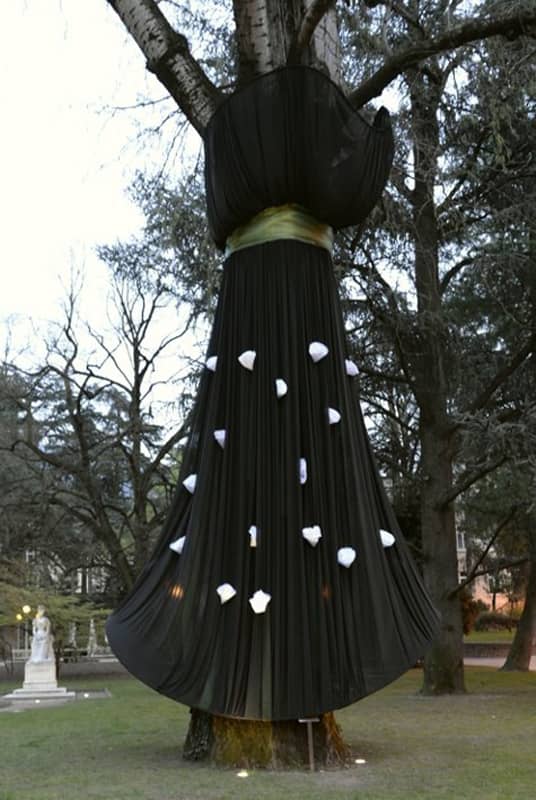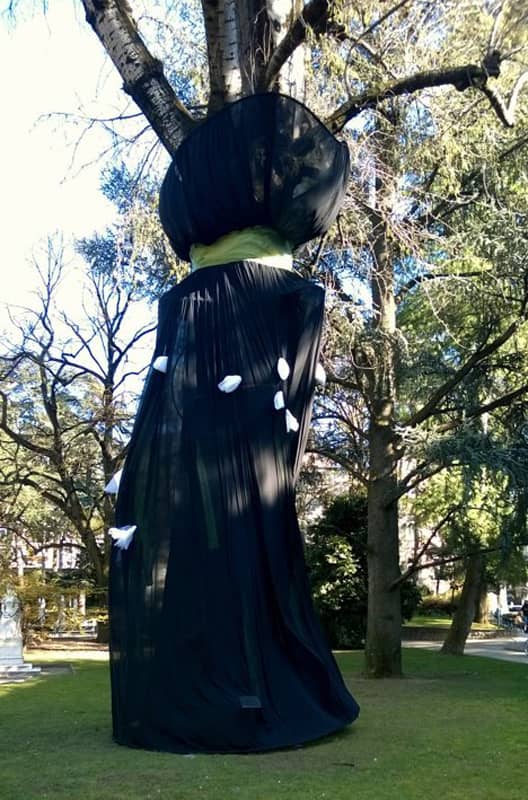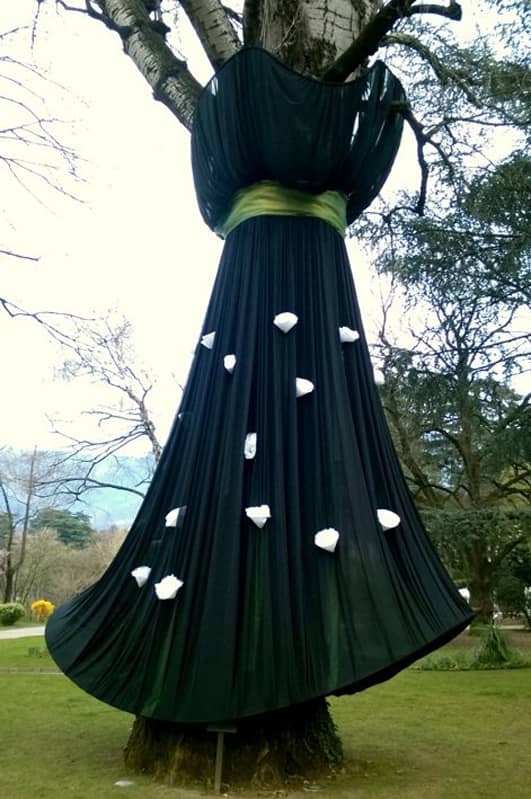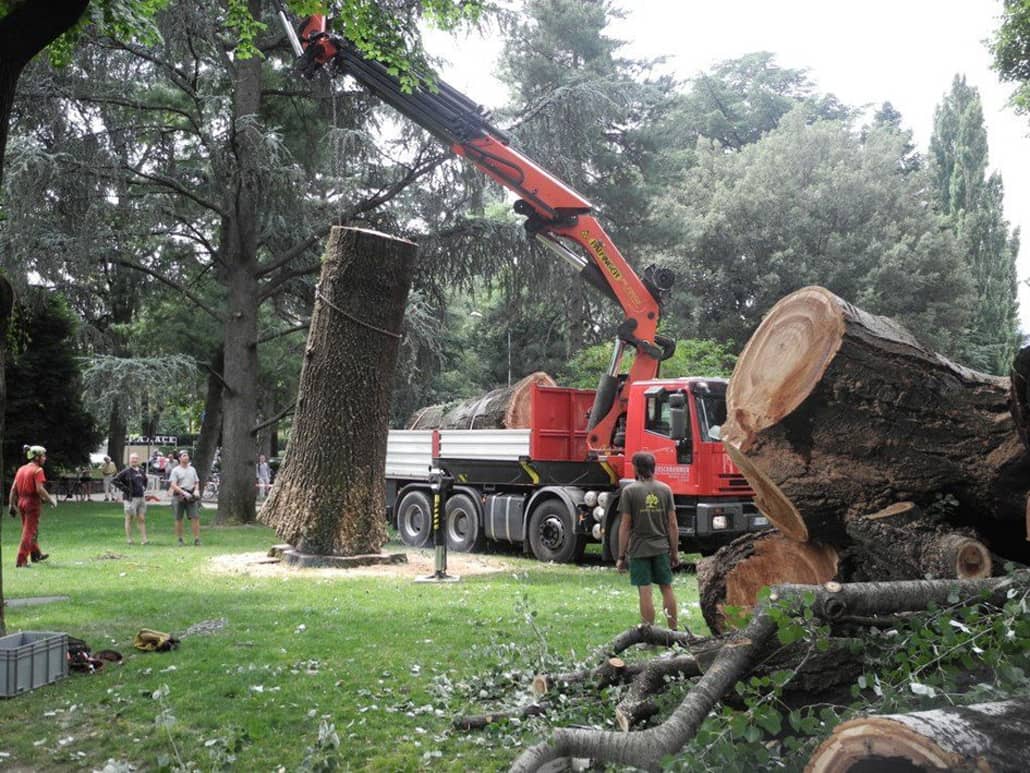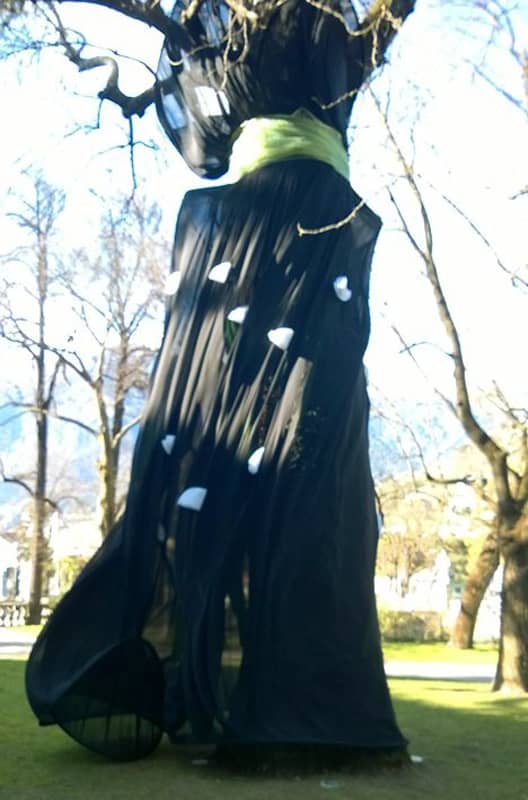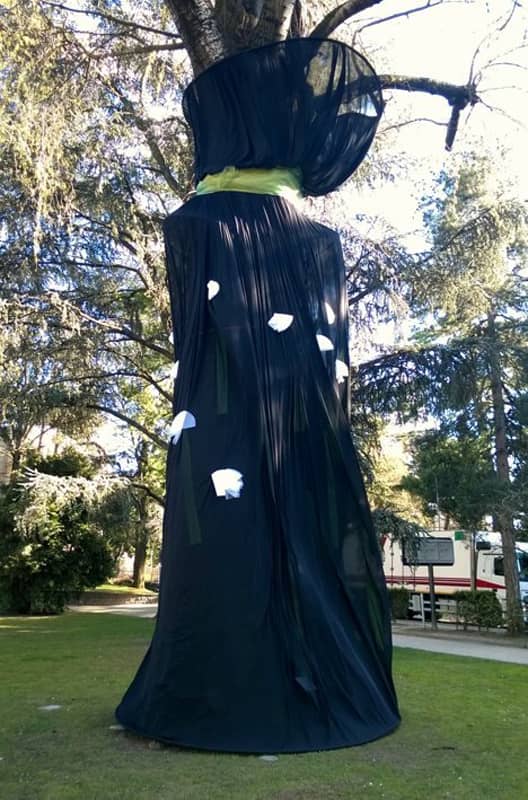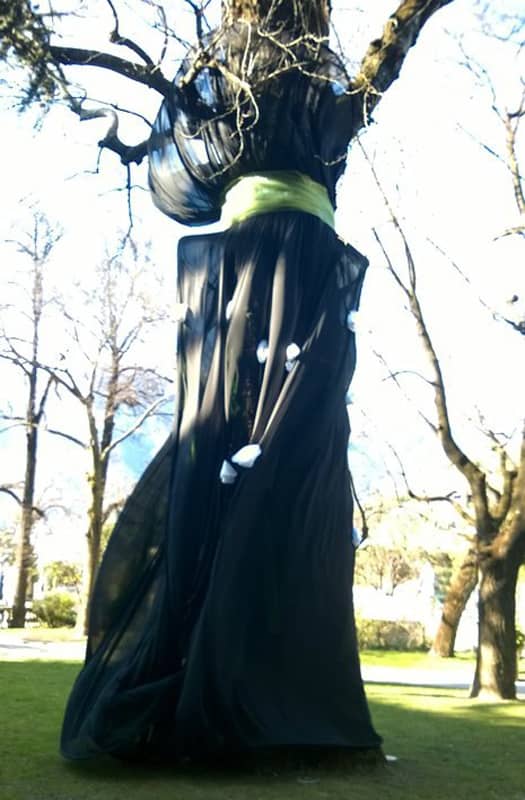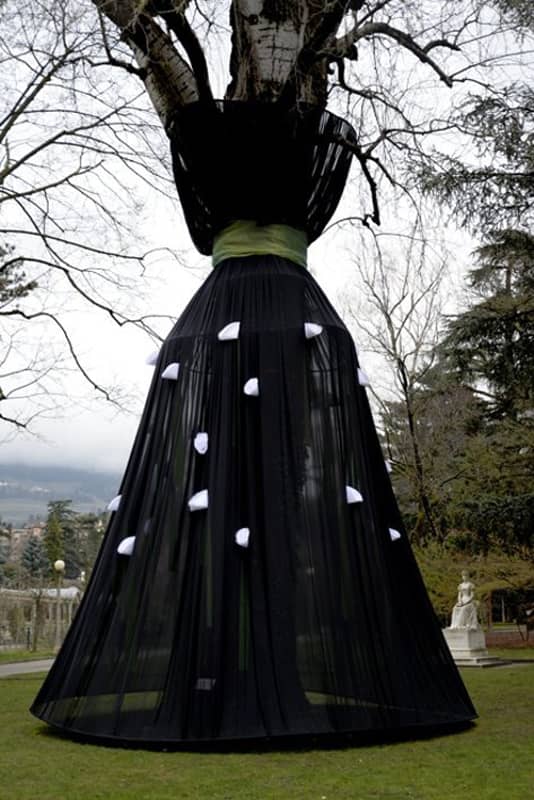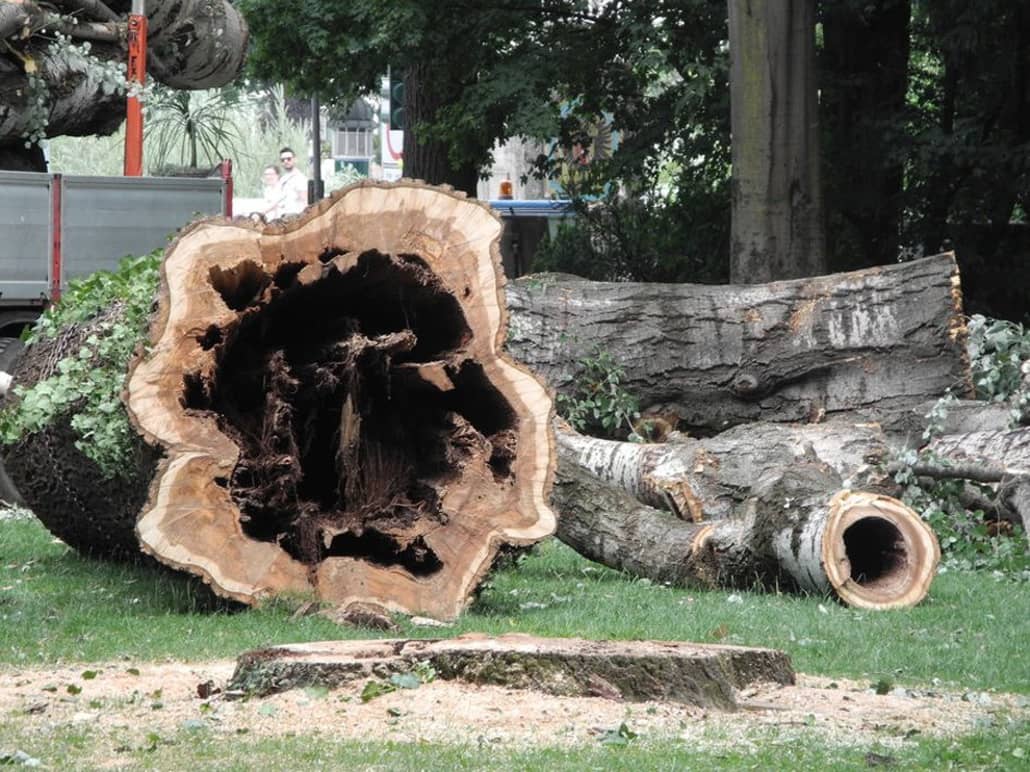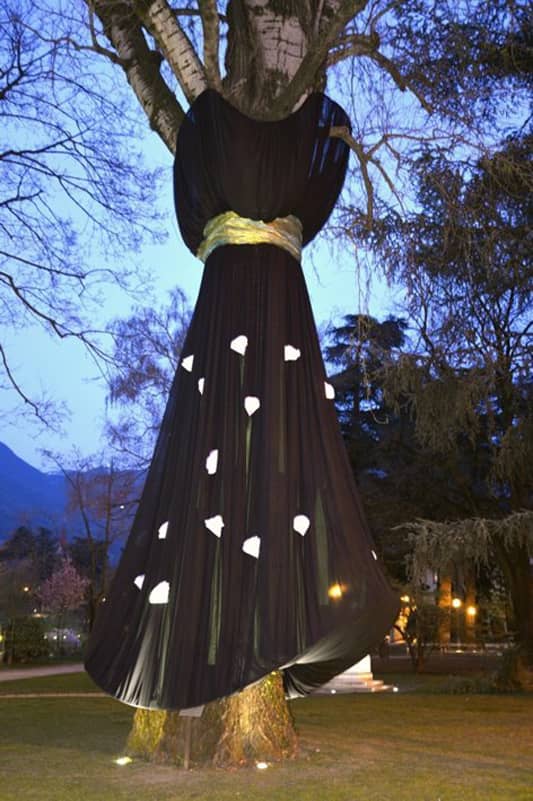Merano Spring
2015 – Art & Nature
Homage to a natural monument in Merano’s Elisabeth Park
In Merano, numerous trees are protected as natural monuments. They are solid landmarks of the city’s history, but hardly anyone knows where to find them. They are recognisable by signs identifying them as protected and by their partially hollowed-out trunks, stabilised on the inside with the help of poles or ropes. They have largely lost the ancient symbolism associated with trees: tree of life, axis of the world, mediator between heaven and earth.
Artist Margit Klammer’s intervention as part of the Merano Spring ‘Art & Nature’ gives one of them a special visibility. It is a 200-year-old grey poplar in the Elisabeth Park, a tree with a diameter of 2 metres, pale bark and wide branches.
The artist dresses the poplar in a dark, semi-transparent baroque dress made of chiffon with a circle skirt. The tree is personified, it becomes a woman dressed for the occasion. “In lean times,” says the artist, “people desire abundance”.
The fabric is modelled on natural vegetation, with green stems growing from the inside out. The chiaroscuro contrasts between the tree trunk and the dress, as well as the contrasts between nature and the plastic dress, intensify the visibility and turn the intervention into an artificial monument to nature.
On the one hand, the intervention clearly plays with the universal characteristic of Art Nouveau, floralism. Art Nouveau allows it to grow, blossom and intertwine on paper and fabric, on lamps and furniture, in wood and silver and in architecture. Her secret and poignant message is always: “Become like plants!”.
On the other hand, the archetypal motifs of myths, fairy tales and legends cannot be overlooked. The symbolism of trees is attested since the origins of art and literature. In the creation myths of various peoples, the gods or even the first human being emerge from a bowl of flowers or a tree. The manifestations of living beings are linked in a sympathetic way and this is particularly true of humans and plants. Human beings, almost always female, can be transformed into plants in myths and fairy tales. The best known example is that of the mountain nymph Daphne, who is transformed into a laurel tree as she flees from Apollo.
In Klammer’s work, man and tree are formed from the same material, beyond all differences, and are held together by the same energy that drives them towards ever new forms.
Heinrich Schwazer
A joint project of the Merano Tourist Authority in cooperation with Kunst Meran, the Municipality of Merano, the Merano Marketing Board and numerous other associations, and the participation of international artists – Curated by John K. Grande

